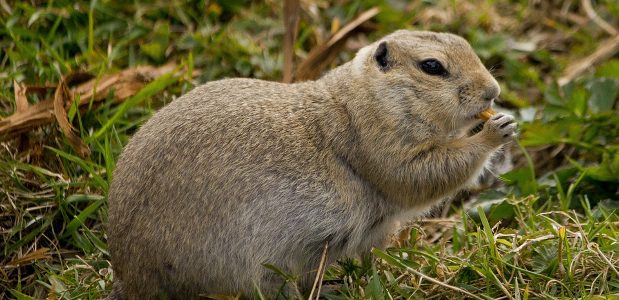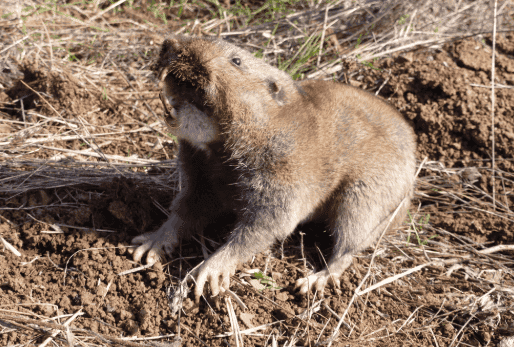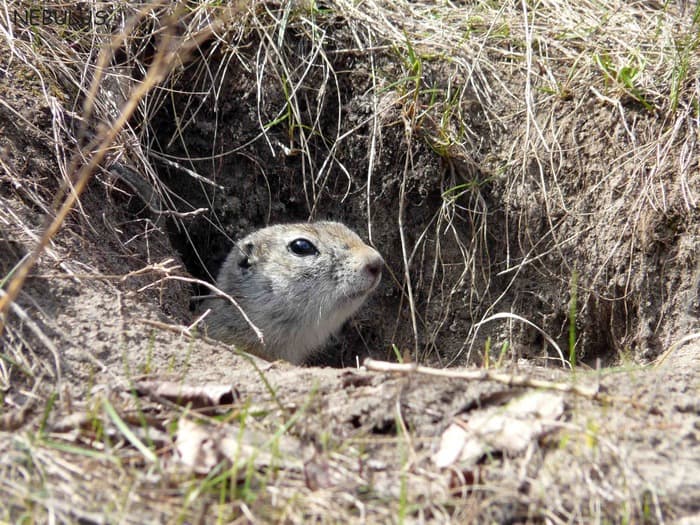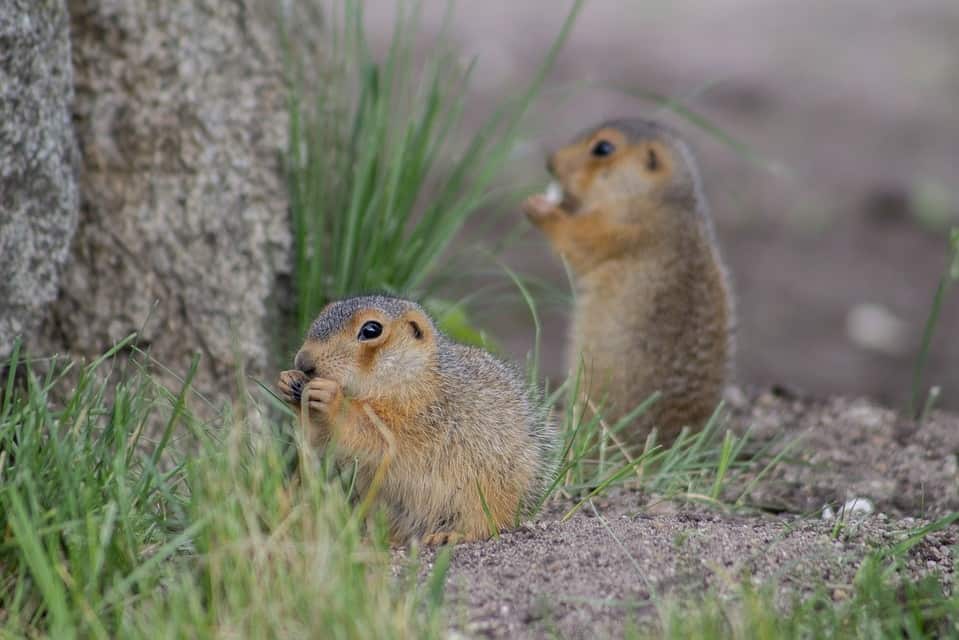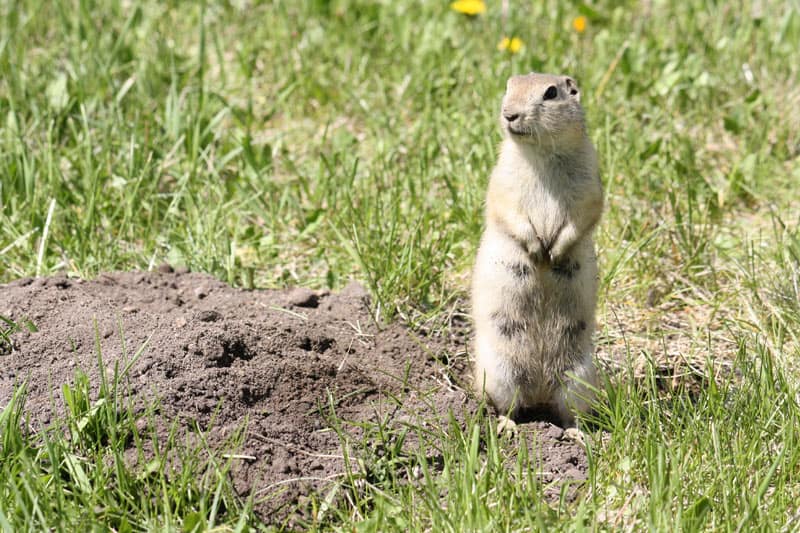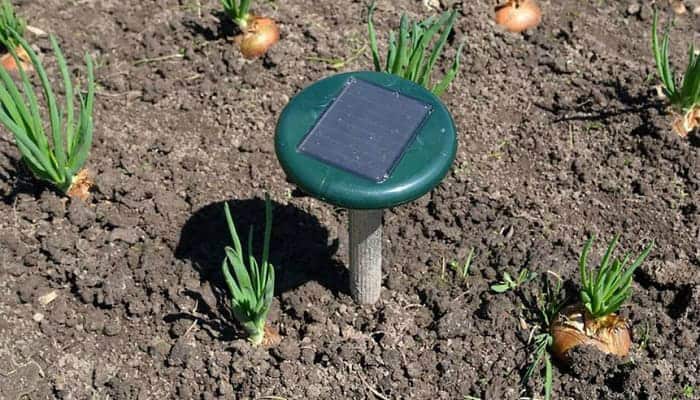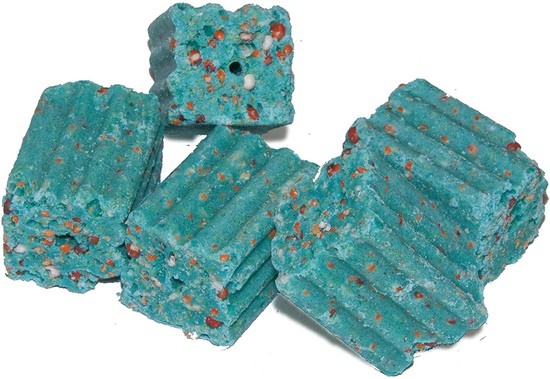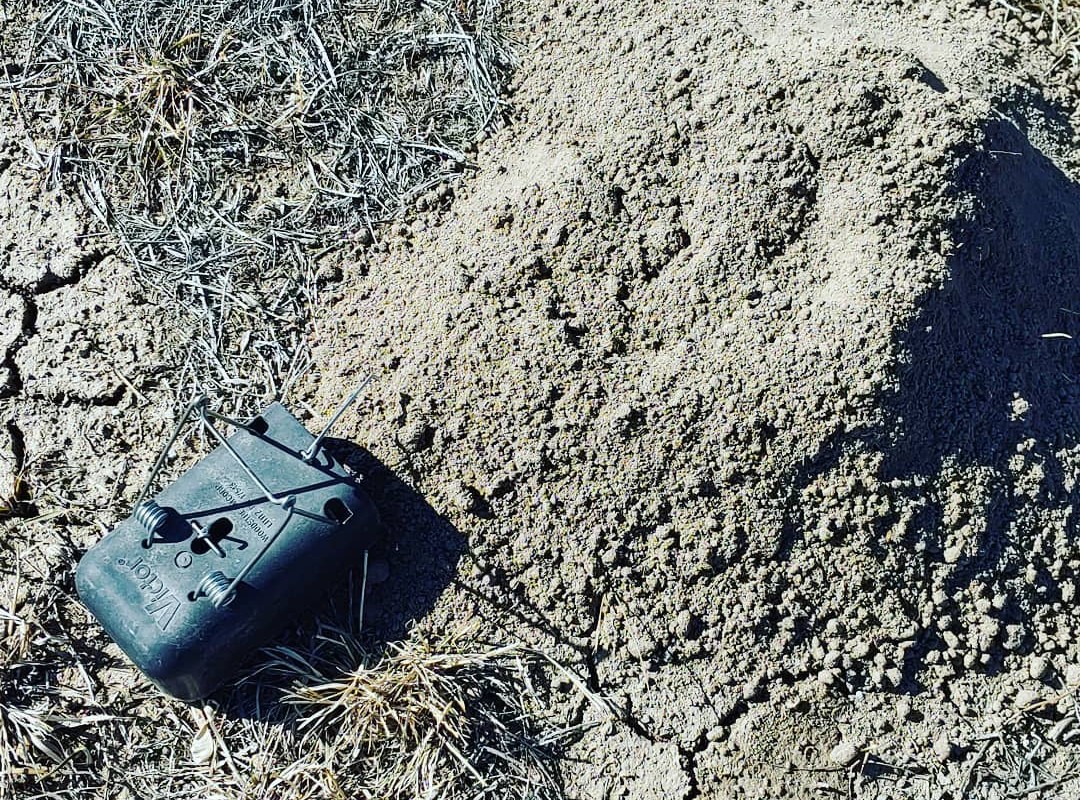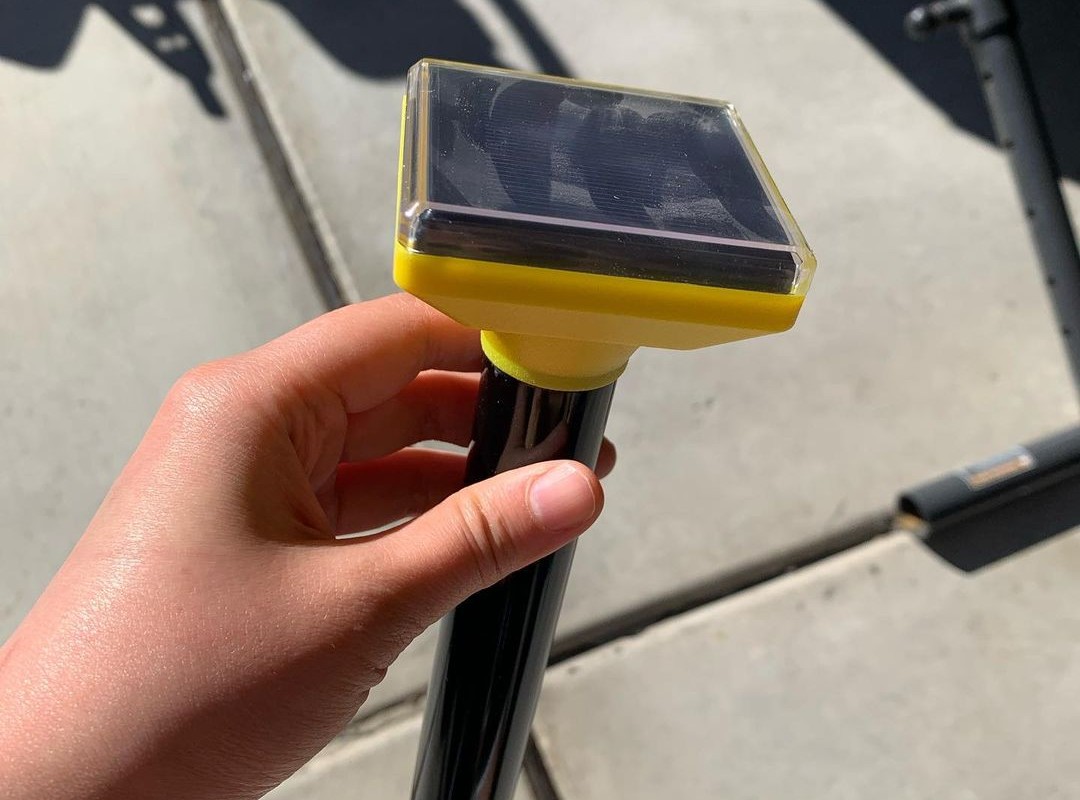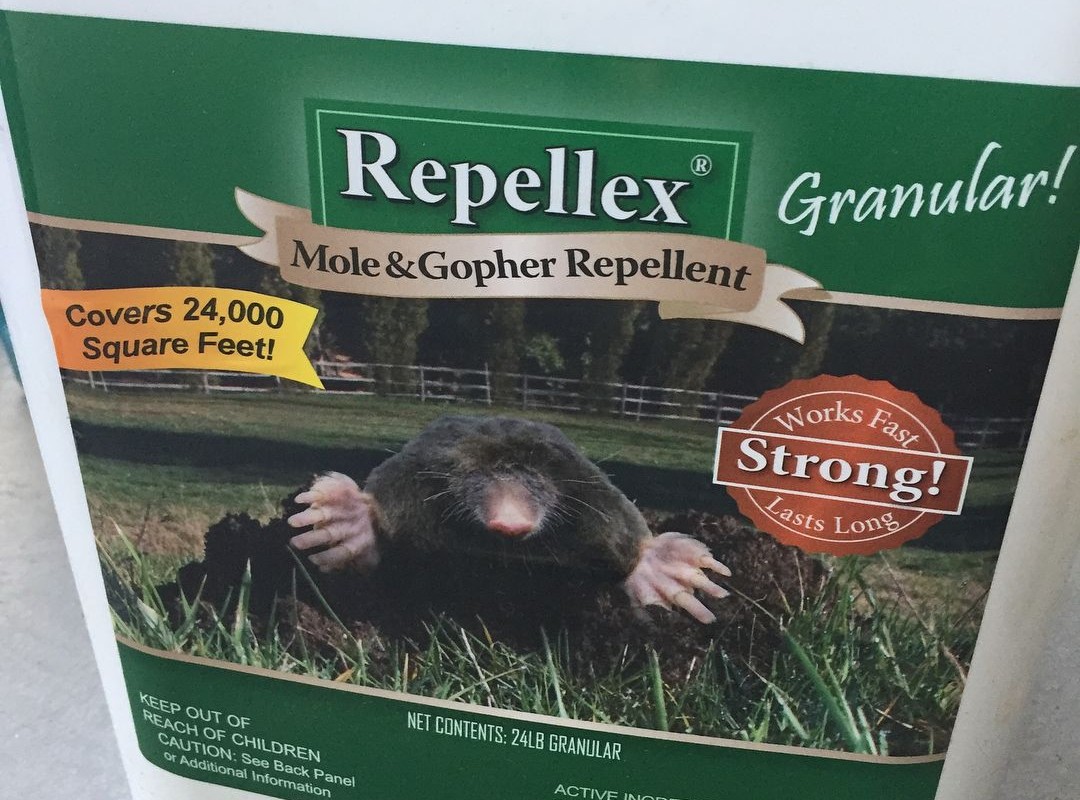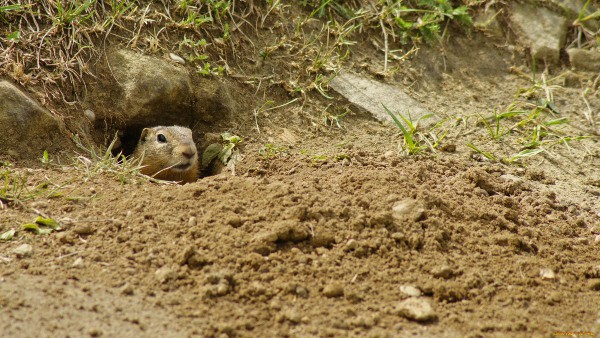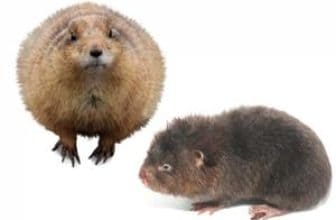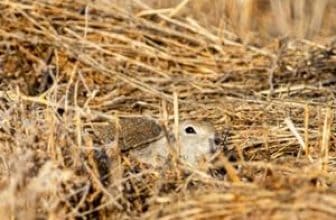Gophers, or pocket gophers — the name they received thanks to fur-lined pouches on their cheeks — are one of the most unpleasant types of garden pests that can seriously damage your yard, ruining flowerbeds, trees, grass fairways, and gardens.
Even if you are not a passionate gardener or owner of the golf course, the developed set of tunnels created by these rodents in search of food with numerous holes and mounds can collapse your yard paths, lawns and patios, weakening the ground beneath. Moreover, they can destroy trees and bushes, eating their roots and building their tunnels right under them.
Even if you haven’t seen gophers on your territory doesn’t mean they are not the cause of your yards’ destruction: these small critters don’t get far from their homes and spend their lives in the tunnels. They are highly connected to their territory and solitary, and you usually won’t have more than one gopher per acre.
For effective gopher elimination, it is essential to study their habits, appearance, and habitat to effectively identify these pests, get better at managing pocket gopher damage, and choose the optimal method of their treatment.
Gopher Identification Guide
What Is a Gopher?
Gophers are small-sized burrowing rodents that come from the Geomidae family. There are many different subspecies of pocket gophers, 35 known gopher species that uniquely reside in North and Central America, to be exact.
These rodents are known and easily identified by their tunneling activities and high destruction of gardens, yards, and farms as they live underground and can develop tunneling systems of up to 2,000 square feet. Sometimes, it is possible to misidentify a ground squirrel as a gopher, as they are distant relatives that come from the Sciuridae family.
Gophers’ weight is approximately 7 oz, and they are 6-8 in long, with a tail that can get from 1 to 2 in. However, the representatives of larger species can reach 2.5 lb and up to 16 inches, depending on their gender and stage of the life cycle. Male gophers are usually larger than females and can get double their weight.
Gophers live from 1 to 3 years, with the maximum pocket gophers’ age getting up to 5 five years, and some gopher species have reached the documented age of seven years while living in the wild. These critters have brown-colored fur that perfectly matches the color of soil and allows them to effectively hide from predators in their habitat.
Their most outstanding feature is large cheek pouches (pockets) that are covered with fur lines and can extend from their mouth up to the shoulders. They have small dark eyes and a small tail that help them to feel the tunnel while moving backward.
How Not to Confuse a Gopher With a Groundhog or a Mole?
Both gophers and groundhogs are small-sized furry rodents that create lots of tunnels underground, using them to move throughout their territory and eat plants and their roots.
However, these critters belong to different families: while gophers are the representatives of Geomiday family, groundhogs come from Sciuridae family, Marmota genus, or the so-called ground squirrels.
You can easily identify a gopher by its furless tail that has a little hair on it, protruding teeth that have a yellow or brown color, and cheek pouches that have fur lines on them and can significantly extend in size. Gophers usually have pink feet, which are more similar to squirrels’ that help them hold small items and nibble them, and comparatively small body.

Gopher.
Groundhogs are bigger in size — these rodents weigh from 4.5 to 14 lbs, they have brownish feet and a shorter tail that is covered with fur. Their teeth hide inside the mouth when it is closed, and their white color is not typical for the majority of rodents.
Their front feet are naturally adapted for ground digging with strong claws that are curved from the face side that allow them to throw the dirt over the shoulders during the excavation.
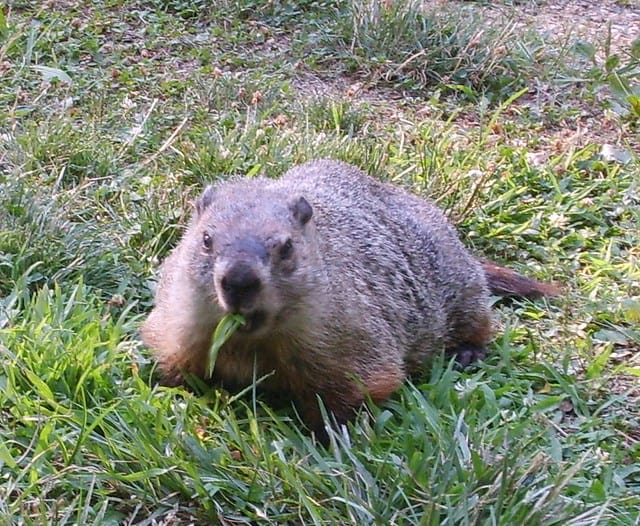
Groundhog.
Both types of critters live to eat plants, but if you want to know what do gophers eat — these varmints prefer roots and tubers, while groundhogs are more interested in greenery, fruits, berries, and vegetables. Groundhogs hibernate in winter, and groundhogs remain active throughout the year.
Moles are the representatives of the shrew family, and unlike many people believe, they are not rodents. These small mammals are insectivores, which means their primary meal type is insects. One of the key differences from gophers and groundhogs is that moles are almost blind and have extremely small eyes — it might even seem they don’t have them.

Mole.
It is easy to identify moles by their appearance: they have soft thick fur with brown or grey color with silver highlights. Moles don’t have external ears, large front feet with long claws that are adapted to constant digging. They can get from 4 to 6.5 in and their tails grow from 1 to 1.5 in. They are much smaller than gophers and weigh from 2.5 to 4.5 oz.
Almost all of their life, moles stay underground, building their tunnels deeper than gophers or groundhogs. They don’t build numerous mounds, and its cone shape makes them different from small-sized gopher holes in the yard made to observe the territory or seek for food.
How Gophers Can Harm Your Yard and Household?
As soon as gophers invade your territory, they might cause severe harm to your yard and your house. With the numerous mounds that are the most obvious signs of gopher invasion, your grass lawn loses its integrity both underneath and beneath the ground.
The developed set of tunnels might get larger holes that will ruin the whole landscape and beauty of the yard as a whole, killing the grass and destroying the united structure of the soil.
One of the key reasons for gophers invasion is hunting for food, roots, tubers, and vegetables. Thus, eating grassroots gophers will destroy your lawn and can even get the grass blades inside their tunnels, leaving the holes and brown areas on your lawn.
Grassroots is not the only source of food for gophers that also feed on the roots of trees, bushes, and other plants, destroying your flower beds and patches. Getting out of their tunnels, these critters can also feed on the bedding plants and flowers.
On this stage of gopher infestation, you might see the absence of flower pods that were blossoming on the flowerbed a day ago, followed by the entire flower plants that gophers pull in their tunnels and keep for future meals.
Getting deeper into your yard, gophers not only ruin your lawns and kill your plants and trees, but also create walking hazards for you and your family. Digging inside their tunnels, gophers leave numerous mounds that have deep holes underneath.
It is quite easy not to see the mound and step just on the hollow ground. This might result in a twisted ankle or even a broken leg. Moreover, if your leg breaks down the mound when the gopher is there or nearby in the tunnel, the critter might bite you, protecting his housing.
Another potential threat is that gophers can infect you and your family with serious diseases, such as rabies, hantavirus, leptospirosis, monkeypox, plague, and lymphocytic choriomeningitis (LCM). They can show no symptoms or signs of the disease, but transfer them through bites.
In case you have children or pets, they might find gophers and want to play with them, increasing the risk of being bitten and infected. They can also have fleas or ticks that can bite you, your children, and pets, and it might be quite hard to get rid of the new pests.
What Attracts Gophers to Come to Your Yard?
In case you are interested in getting rid of gophers in your yard, you have to first identify what attracts them to your territory. One of the key forces that attract them to your yard is a stable source of food and soft, breeding soil.
They like to eat ground roots and vegetables that can be easily found in any yard and garden, and they also like to eat garden insects, so in case you have a blossoming garden with trees, plants and bushes, a flower and grass lawn or a vegetable patch — these rodents will be attracted by the ability of tasty snacks.
Being known as ground diggers, gophers prefer to build their set of tunnels in a high-quality soil that is not too dry or rocky. Almost all gardeners nourish their patches as often as possible, using various fertilizers and watering their plants at least once a week.
Such soil is perfect for building tunnels and multiple mounds, being a great option for gopher’s housing. As they do not hibernate and stay active during the whole year, it is important for these rodents to live in the area where they can always find an extra source of food that is not invaded by predators.
Like many other rodents, gophers live an isolated life and don’t usually interact with other representatives of their species. Thus, it is important for them to find an area that is free from other critters that can be used for the creation of isolated housing.
Thus, the garden that is not inhabited by other rodents is a perfect option for any gopher to build their tunnels without competing for the territory or sharing the food sources with other animals.
The Signs of Gopher Infestation in Your Yard and Household
Getting attracted by the favorable environment, gophers can quickly build a set of their tunnels underneath your property, making your lawn a source of potential threats and injuries. Thus, it is important to quickly identify whether you have these pests on your territory.
The most evident sign of gopher invasion is the appearance of one or several dirt mounds throughout your garden. Mounts appear near the newly built tunnels when gophers get rid of unnecessary soil while constructing the funnels, leaving small oval-shaped hills throughout their territory. When the construction is over, gopher gets back to plug the unnecessary exit and protect the created shelter from other animals.
Another vivid sign of gopher infestation is destroyed greenery. It is not always easy to find the mounds that can be situated in the distanced part of your territory or get hidden under the fallen leaves or high grass, it is nearly impossible to miss the injuries these rodents leave both upside and downside the vegetation.
These critters primarily feed on the plants’ roots, but they can also destroy flowers, blossom, and leaves, destroying flower beds and gardens. Smaller plants can be completely dragged in their tunnels and kept for future meals, leaving brown patches within your green clearing.
In case you have mentioned these changes in your garden, check your territory for newcomers.
How to Get Rid of Gophers in Your Yard
To clean up your territory from rodents, it is essential to choose the strategy for pocket gopher control and strictly follow the basic instructions for the most effective methods of gopher eradication. To help you choose your best way to get rid of gopher, I have collected the most viable recommendations that will help you in managing gophers and get back to your flowering garden as soon as possible.
Live Traps
The most effective and widespread way of gopher removal is baiting it in a trap and releasing it far away from your territory. Live gopher traps are one of the most effective non-labor-intensive methods of quick gopher eradication from all types of yards.
It is also good because it does not require any additional actions or strict monitoring of the process, leaving you plenty of time while the trap is waiting for the critter.
To catch a gopher in a live trap, you have to:
- Use some green, lettuce, peanut butter or cabbage as bait and put it inside the trap;
- Put a trap as close to the entrance of the gopher’s burrow as possible;
- Check the trap the next day and wait until the gopher gets caught;
- When the gopher is caught, you have to take the trap as far as possible to release the critter;
- Remove the mounds and exits, and fill in the tunnel with soil throughout your property to exclude the appearance of new rodents that
- Might want to settle in an empty housing.
Repellents
To make gophers leave your territory themselves, you can use another humane and pretty simple method — repellents that will deter the varmints and force them to seek another place to leave. Gophers have an extremely sensitive sense of smell, and it is impossible for these pests to live near the source of a strong, unpleasant smell.
To use the repellent to get rid of your rodents, follow these steps:
- Find and choose one exit route that the gopher will use to get out of the burrow and the leave the territory;
- Put the repellents (peppermint or castor oil, fish scraps, mothballs, Tabasco sauce, pet waste, etc.) in the other holes from the burrows, starting from the ones that are situated near your house;
- In a couple of days, put more gopher repellents near more distanced burrows, moving the rodent towards your planned exit;
- When the gopher leaves your territory, you can start to remove the burrows to protect your yard from other pests.
Gopher Bait Applicator
Another method of controlling pocket gopher damage that has recently become more popular is using the bait applicator to catch underground pests directly in their burrows. The bait applicator can be put directly inside the soil that might result in more speedy gopher elimination.
However, you must take into account that killing gophers do not result in prolonged protection from critters as they can come back to your yard. It is also inhumane and might affect your pets or other underground tenants, such as centipedes and earthworms.
Using the bait applicator is pretty easy:
- Put the applicator on your bait — the majority of contemporary applicators will fit any baits you use;
- Find the area in the yard, underneath which there is a gopher tunnel. You can identify it, following the nearest mounds;
- Put the bait with an applicator inside the ground, pulling it deep enough to reach the tunnel;
- Wait for a couple of days and try to fill the burrows with soil. In case there are no new mounds found on your property, the bait applicator has worked.
Ultrasonic Repeller
Ultrasonic or ultrasound repellers are one of the best ways to get rid of gophers as fast as possible. It is one of the best methods of gophers eradication in case you have identified several pests on your territory and need to expel them super fast.
Gophers have a sensitive hearing and they can’t stand noisy environments, so you can as well try to turn on loud music and wait until the rodent runs away from the noise. But in case you want to receive a quick result, ultrasonic repeller will be the best option to clear your yard from irritating critters.
How to use ultrasonic repeller:
- Choose the place in your yard with the highest gopher activity;
- Insert the ultrasonic repeller inside the ground in the chosen area, leaving approximately 2 inches over the ground to protect the repeller from liquid;
- Turn the repeller in by switching the particular button. As a rule, you will hear a short buzz just after the repeller is activated;
- Leave the repeller in the yard for several days;
- When the gopher is gone, you can switch the repeller off and start to restore your garden and grass lawns.
Using ultrasonic repeller allows you to get the gophers away from your territory in a humane, non-chemical way and keep them away in the future. You can easily leave the repeller in your yard for as long as you wish or quickly return it back, in case you find any signs of new pest invasion.
Poison
One of the most widespread methods of lethal gopher invasion control is spreading poisonous pellets to bear the holes of the gopher burrows or putting them directly in the tunnels or using the poisonous traps.
Such pellets usually contain zinc phosphide — a toxic chemical that is dangerous for all types of animals and people, and thus this might be dangerous in case you have pets or children, or in case they have access to your territory.
Implementing poisonous traps to eliminate rodents include the following steps:
- Find the exits created by the gopher to get out of the burrow;
- Put the trap near the hole or spread the pellet nearby or out them directly inside the hole;
- In several days, check your chosen location to see whether the trap worked.
Although the poison is an effective way to get rid of gophers, it cannot keep rodents or any pests away from your territory for long, and it is an extremely cruel method of killing gophers that haven’t got any intentions to produce any harm.
Top 6 Gopher Treatment Remedies
1. Victor Black Box Reusable Gopher Trap: Professional Gopher Treatment Method
Specifications:
- Color: Black
- Material: Multi
- Item Weight: 13 ounces
- Item Dimensions LxWxH: 10.16 x 16.76 x 16.25 inches
- Target Species: Gopher
This choker loop-styled gopher trap can be used in all types of soil and is water-resistant. No need to use any poisons or chemicals — the trap is an answer to how to catch a gopher just in its habitat: all you have to do is place the trap in the tunnel and wait until it snares the critter while moving in the burrow.
This trap has a safe construction that is kept below the ground to keep your family and pets protected from undesired harm. This trap is super simple and easy to use — just find the tunnel, put the trap inside, following the tunnels’ direction, cover the trap with the soil and that’s it!
Another advantage is the quality of materials: this trap is made of sturdy plastic and metal parts, and it can be used multiple times, so you don’t need to buy more than one.
| Pros: | Cons: |
|
|
2. Victor Sonic Spike: Effective Gopher Deterrent Product
Specifications:
- Color: Black/Yellow
- Material: Metal
- Item Weight: 13.7 ounces
- Item Dimensions LxWxH: 2.6 x 2.6 x 11.5 inches
- Target Species: Gopher, Mole
This sonic spike is one of the best ways of humane gopher removal that works quickly and spreads the effect on all types of garden critters. All you have to do is put the batteries inside the spike, create a hole in the soil, and insert it inside.
Each spike produces sonic impulses that penetrate the soil around it and radiates extremely irritating sounds that force rodents to move away from your property. Leaving the repeller in the ground allows you to protect your yard from any future critter generations.
| Pros: | Cons: |
|
|
3. Repellex Gopher, Mole, and Vole Granular Repellent: Effective Help For Gopher Eradication
Specifications:
- Active Ingredients: Castor Oil, Cinnamon, Garlic, White Pepper
- Item Form: Granules
- Item Weight: 25.8 pounds
- Item Dimensions LxWxH: 10.5 x 9.75 x 13.25 inches
- Target Species: Gopher, Mole
Using gopher repellent is the most optimal way to keep your garden clean and safe, as it doesn’t harm your soil or further destroy the lawn, keeping the dead gophers somewhere underneath. Being made of highly effective natural components, this US-produced repellent affects the highly sensitive sense of smell of the rodents, making them leave your garden once and forever.
| Pros: | Cons: |
|
|
4. JT Eaton 166004 709-PN Block Rodenticide Anticoagulant Bait – Gret Assistant For Gopher Eradication
Specifications:
- Active Ingredient: Diphacinone 0. 005%
- Color: Green
- Capacity: 9 Pounds
- Item Dimensions LxWxH: 11 x 11 x 10 inches
- Target Species: Rats and Mice
If you need to know how to kill gophers, this first-generation anticoagulant bait is one of the most popular rodenticides that is used to get rid of all types of rodents, including gophers, mice, rats, etc. It has a peanut butter flavor that effectively attracts pests and Diphacinone chemicals to effectively eliminate critters.
| Pros: | Cons: |
|
|
5. Yard Butler IGBA-1 Gopher / Mole Bait Applicator: Useful Tool For Quick Gopher Removal
Specifications:
- Color:
- Material:
- Item Weight:
- Item Dimensions LxWxH:
- Target Species:
To clean your territory from all types of rodents using a Yard Butler bait applicator will allow you to get the poison directly to the gophers’ burrows, keeping your pets safe as the applicator hides the chemicals underground. Thus, poison is spread directly inside the tunnels and you get more chances to quickly remove all critters from your property.
This reusable bait applicator will work with the majority of gopher baits and is made of strong, durable materials. In case it didn’t work for you, you can return the applicator and receive a full refund within 30 days after the purchase.
| Pros: | Cons: |
|
|
6. The Giant Destroyer Gas Killer: Effective Gas Gopher Elimination Method
This gas rodent killer can be used directly inside the rodents’ burrows in all types of gardens, parks, lawns, or even re-forest areas. It is made of natural organic substances and effectively eliminates gophers, moles, woodchucks, rats, and ground squirrels. Thus, even if you have misidentified the type of pest that invaded your territory, this gas killer will help you get rid of them.
To apply a gas killer inside the rodent burrow, you have to drop it directly inside the hole of the burrow and cover it with soil, directly following all the given instructions. Be careful to protect yourself and keep pets and children away while spreading the gas. This Giant Destroyer gas killer will help you to quickly get rid of all critters that are ruining your garden without any additional tools.
| Pros: | Cons: |
|
|
FAQ
Are Gophers Dangerous?
Gophers do not represent any real danger to humans or pets. However, they might harm trees and vegetation, eating roots, and tubers. They might also have serious diseases such as rabies, and carry pests (fleas or ticks).
What Do Gopher Holes Look Like?
Gopher holes have round or oval shapes, and their mounds are fan-shaped with plugged holes. In case the holes have fresh, fluffy soil, it means that the gopher is still actively developing this tunnel.
Also read:
When Do Gophers Come out of Their Holes?
Gophers rarely leave their burrows and spend most of their life downside, coming out only in cases of danger or seeking for food — they usually grab the plant and drag it inside the tunnel.
Are Gophers Blind?
No, gophers are not blind, they have small dark eyes and can see at night and in the day time.
What Attracts Gophers?
Gophers are attached to the territory with lots of food, healthy and soft soil, the absence of other rodents and predators. They also prefer to live in quiet places without any plants that have a strong smell.
What Does a Gopher Eat?
Gophers prefer to eat roots and tubers, although they might also eat flowers, blossoms, leaves, and grass.
The Best Methods To Get Rid of Gophers Yourself
Being able to try multiple gophers control methods, I have to say that all of the methodologies I have shared above are both effective and easy to implement yourself. Either you prefer more humane gopher treatment or require quick and radical actions, you can choose the tips that you like most.
In case you are searching for the perfect combination of effective and quick gopher eradication that will produce a prolonged effect, I highly recommend paying attention to gopher repellents, both chemical or ultrasonic. However, if you have received a long-term effect on implementing other gopher elimination methods, share your experience in the comments. I hope you liked the observation of the top gopher treatment methods.
Have you tried the live traps? How long did it take you to remove all rodents from your property? Let’s share our experience below!
References:
- Managing Pocket Gopher Damage(Texas AgriLife Extension):
https://agrilifeextension.tamu.edu/library/wildlife-nature-environment/managing-pocket-gopher-damage/ - Why are there so many different subspecies of pocket gophers? (Museum of Vertebrate Zoology):
https://mvz.berkeley.edu/DoingNaturalHistory/mammalsresearch.html - Help and Site Map(U.S. Department of Agriculture):
https://www.aphis.usda.gov/aphis/banner/help - A Novel Strategy for P ategy for Pocket Gopher Contr et Gopher Control(University of Nebraska):
https://digitalcommons.unl.edu/cgi/viewcontent.cgi?referer=https://www.google.com/&httpsredir=1&article=1065&context=gpwdcwp - Managing Gophers(Oregon State University Extension Service):
https://extension.oregonstate.edu/sites/default/files/documents/12281/managinggophers.pdf - Controlling Pocket Gopher Damage(Texas Cooperative Extension):
https://agrilifecdn.tamu.edu/wpbt/files/2011/07/l1904_10.pdf
Contents
Why You Should Trust Pest Control Hacks?
We know that pests are nasty neighbors, and it can take months to eliminate them without the right approach. Our experts use their own experience to compile articles and guides that are introductory and informative. Our authors’ opinions are independent and based on the results of practical testing of pest control tools. We do not notify manufacturers of testing of their products and do not receive payment from them for posting their items. Also, our texts are never submitted to company representatives for proofreading before placement. On the site, you will find exclusively objective ratings and reviews.

